Bee Identification & Control
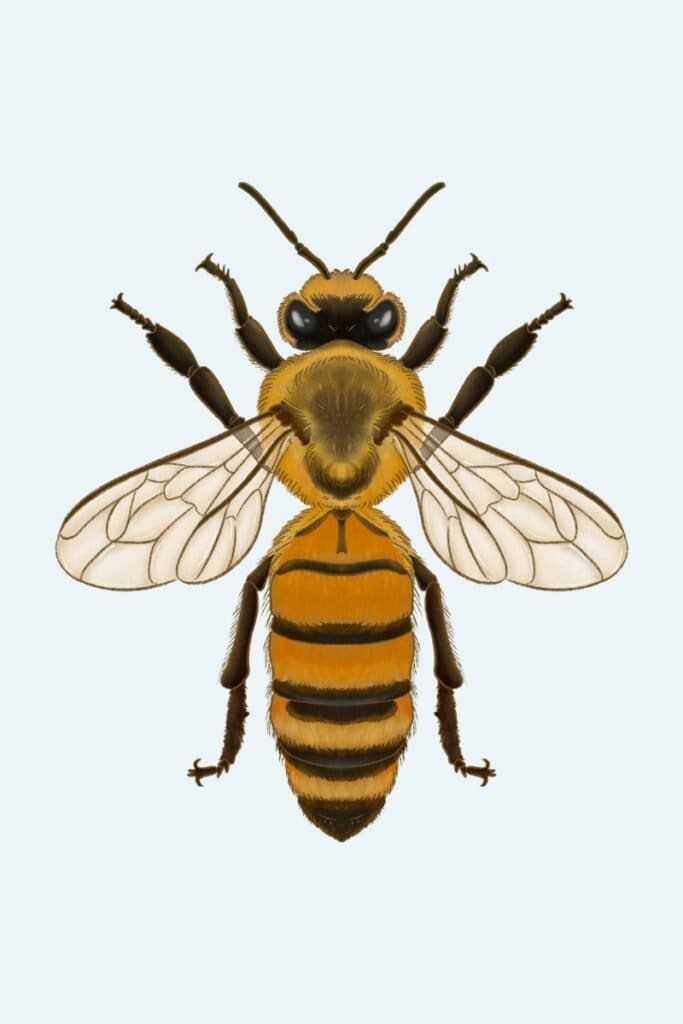
About Bees
Bees are among the most important pollinators worldwide, contributing to the health of ecosystems and supporting agriculture through pollination. With over 20,000 species globally, bees are a diverse group of insects that play essential ecological roles.
However, they can become pests when they nest near homes or in structures. This can cause concerns for safety due to potential stings or structural damage, especially in cases of carpenter bees boring into wood.
Appearance
Bees are usually recognizable from their color and body shape. They have segmented bodies with six legs, two antennae, and two pairs of wings. Their bodies are often covered in fine hairs, which aid in pollen collection.
Behavior
Bee behavior varies by species, but most fall into two categories: social or solitary.
- Social Bees: Honey bees and bumble bees live in colonies with a queen, workers, and drones. They work collectively to forage for nectar and pollen while defending their nests when threatened. Honey bees also perform a “waggle dance” to communicate the location of food sources.
- Solitary Bees: Carpenter bees, unlike social species, create individual nests. Females bore into untreated wood to lay eggs, which develop in their self-made tunnels.
Bees are most active during warm months when they forage for food and tend to their nests.
Risks
Although bees are beneficial to the environment, their presence near homes can pose risks:
- Stings: Honey bees and bumble bees sting when threatened, with honey bees stinging only once before dying. Bumble bees can sting multiple times without losing their stingers.
- Structural Damage: Carpenter bees drill round holes into wood, potentially weakening beams, furniture, or other wooden structures over time.
- Swarming: Honey bee swarms may alarm homeowners when large clusters gather to find a new nesting site, although swarming bees are usually docile.
Identification
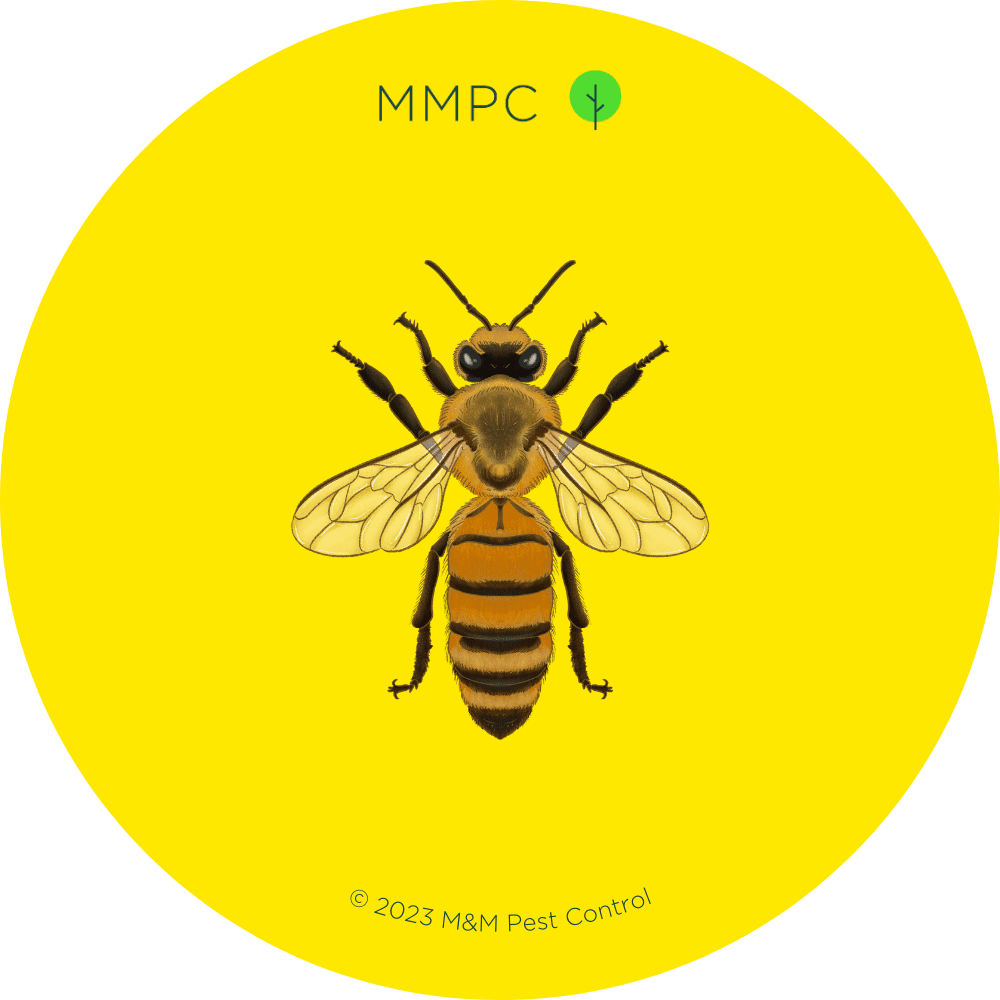
Honey Bee
Honey bees (Apis mellifera) are social insects known for their critical role in pollination and their production of honey and wax. These small, striped yellow and black bees live in large colonies consisting of a queen, workers, and drones.
Honey bees inflict a sharp, painful sting if threatened. They are the only type of bee with barbed stingers, which means that the stinger breaks off after use and causes the bee to die.
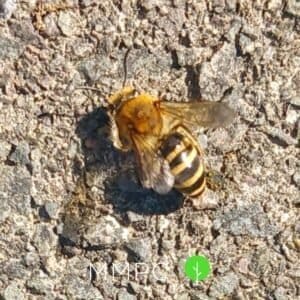

Size: 3/8″ – 5/8″ (10 – 15 mm)
Color: Brownish-black and golden-yellow
Identifying Features:
- A slender, fuzzy body with black and yellow stripes
- A heart-shaped face
- 2 pairs of clear, translucent wings
- 6 fuzzy legs
- Workers have a pollen basket on their hind legs – a smooth cavity on the tibia surrounded by hairs for collecting pollen.

Bumble Bee
Bumble bees (Bombus spp.) are large, fuzzy pollinators that live in smaller colonies than honey bees. They build their hives underground, usually under rocks and vegetation or in empty rodent burrows. Occasionally, they might take up residence in shady areas around peoples’ homes and yards.
Bumble bees are normally not aggressive until their nest is disturbed. Unlike honey bees, bumble bees can sting multiple times.

Size: 1/3″ – 2/3″ (8.5 – 16 mm)
Color: Black with yellow, white, orange, or reddish-brown stripes
Identifying Features:
- A stout, fuzzy body covered with dense hair
- Most species have 1 or 2 distinct patches of yellow hair on the thorax and abdomen, plus a patch of yellow, white, orange, or reddish-brown hair at the tail end
- 2 pairs of clear, translucent wings
- 6 fuzzy legs
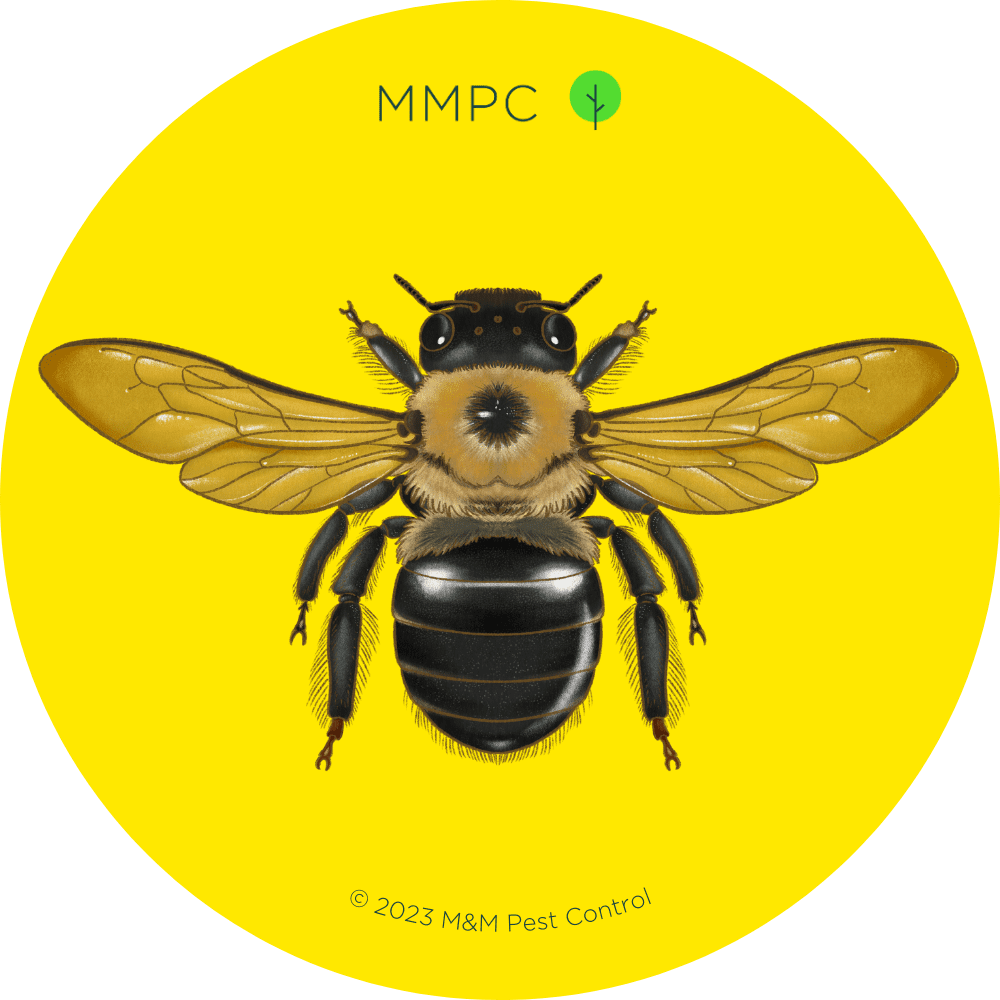
Carpenter Bee
Carpenter bees (Xylocopa virginica) are wood-destroying pests that drill perfectly round, 1/2″ diameter holes into wood as they build their nests. They are traditionally considered solitary bees that do not form hives or colonies. Instead, they prefer to live in small groups with individual nests.
Carpenter bees can cause significant cosmetic and structural damage when they target wooden building structures and outdoor furniture. They are not aggressive and rarely sting (only if handled).
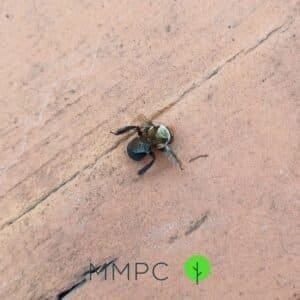

Size: 3/4″ – 1″ (19 – 23 mm)
Color: Black and pale yellow
Identifying Features:
- A fuzzy thorax with pale yellowish hairs and a sparsely-haired black spot in the center
- A shiny, hairless abdomen that’s mostly black with a slight metallic purple tint
- Sharp, wedge-shaped mouthparts for boring into wood
- 2 pairs of translucent wings with dark-colored veins
- 6 fuzzy legs
Control
How to Get Rid of Bees
Managing bee populations involves a balance between conservation and ensuring they do not cause harm or damage structures.
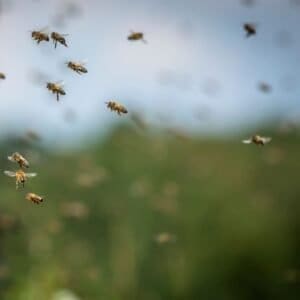
Honey Bees
Honey bees are critical pollinators, so non-lethal control methods are preferred whenever possible.
Swarming honey bees are generally docile and not a threat unless provoked. If a swarm is spotted, it is best to contact a local beekeeper who can safely relocate the bees without harming them.

Bumble Bees
Bumble bees build underground nests that look like small, 1/2″ diameter holes, usually in sheltered areas with soft soil.
These nests are often seasonal and naturally abandoned by late fall. If the nest is in a low-traffic area, consider leaving it undisturbed. However, nests near doorways or walkways may require professional removal for safety.

Carpenter Bees
Carpenter bees prefer untreated, weathered wood for nesting, so you can prevent infestations by regularly painting or staining exposed wooden surfaces, such as decks, fences, eaves, and siding.
If you discover carpenter bees boring into wood, you can use diatomaceous earth and other insecticidal dusts to eliminate them. Apply the dust directly into their tunnel entrances, preferably at night when the bees are inside.
Carpenter bee traps are another non-chemical method for reducing bee populations. These traps are designed to mimic carpenter bees’ preferred nesting holes, luring them inside.
FAQs
Do Bumble Bees Sting?
Yes, bumble bees can sting if their nest is disturbed. Unlike honey bees, they can sting multiple times without harm to themselves.
Do Carpenter Bees Sting?
Male carpenter bees don’t have stingers, but they may hover aggressively near nests. Female carpenter bees can sting but rarely do unless provoked.
Our Services
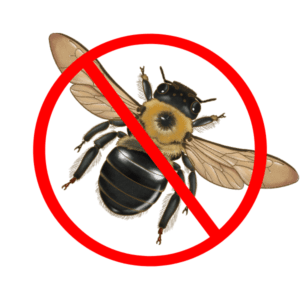

At MMPC, we specialize in eco-friendly and effective bee control solutions. Using Integrated Pest Management (IPM), we focus on safely removing hives, repairing structural damage, and preventing future infestations through exclusion techniques.
Need help getting rid of bees? Talk to one of our pest experts today.


